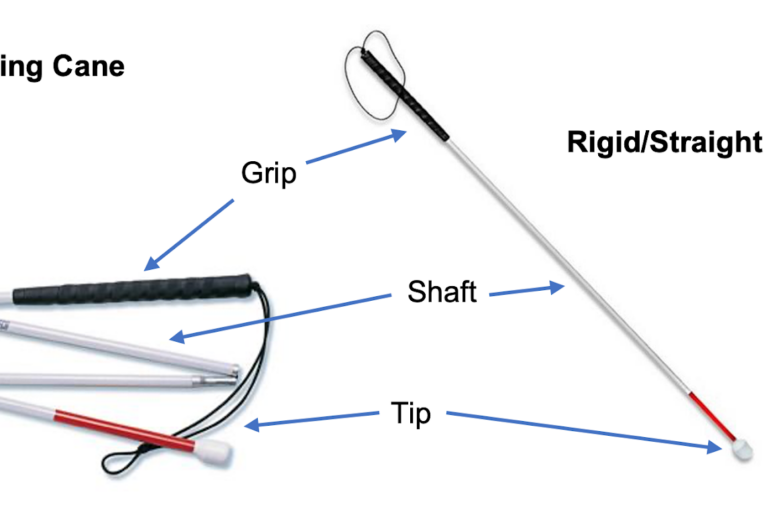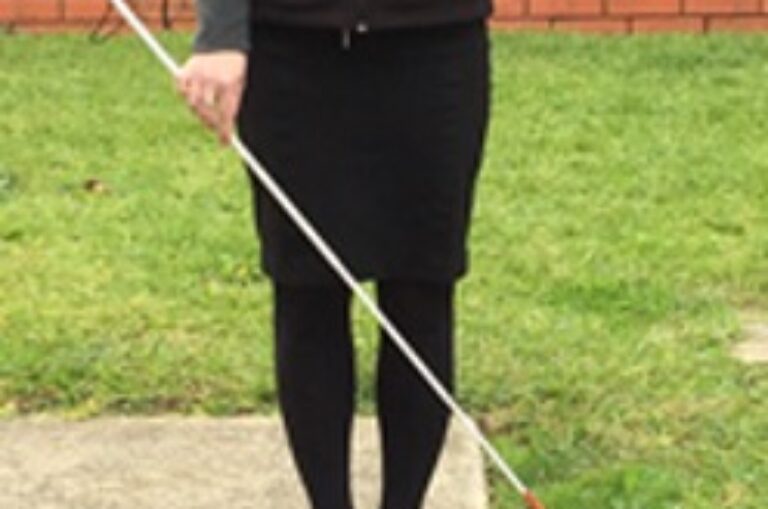About this list
A long cane is a mobility aid that helps people with low vision or blindness to detect obstacles and hazards on the ground in front of them. The long cane is generally white in colour because white is an international symbol of vision impairment.
We’ve put together a list of some of the most common types of long canes.
It’s not exhaustive and, before you read on, it’s worth noting that the best type of cane for a person with low vision or blindness will depend on their specific needs, preferences, and level of mobility. It’s important to seek advice from an Orientation and Mobility Specialist to determine the best type of cane for each individual.
Aluminium cane
An aluminium cane is the most common type of long cane. Aluminium canes are lightweight (although not the lightest canes available), durable and often less expensive than canes made from other materials. Aluminium also allows for easy customisation.
Composite fibre cane
A composite fibre cane is generally made from fibreglass and resin. Many composite fibre canes are lighter than aluminium canes and offer greater sensitivity in detecting surface irregularities. They are also more durable than aluminium canes and are less likely to bend or break.
Carbon fibre cane
A carbon fibre cane is made of extremely thin strands of carbon, which are tightly woven together to form a fabric-like material. This is the lightest common material used for making canes and is exceptionally strong while remaining highly sensitive.
There are many devices, tools and aids available to make your life easier. If you need help finding the right ones for you, take a look at our Assistive Technology resources.
Read more about canes
Ready to continue?
Seems like you have filled this form earlier. Let’s pick up where you left off.





